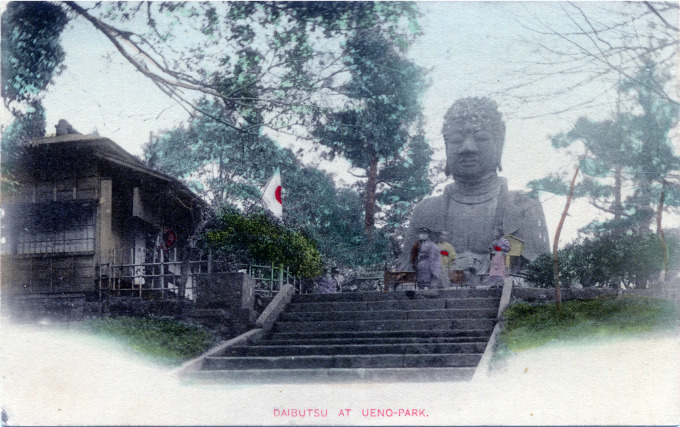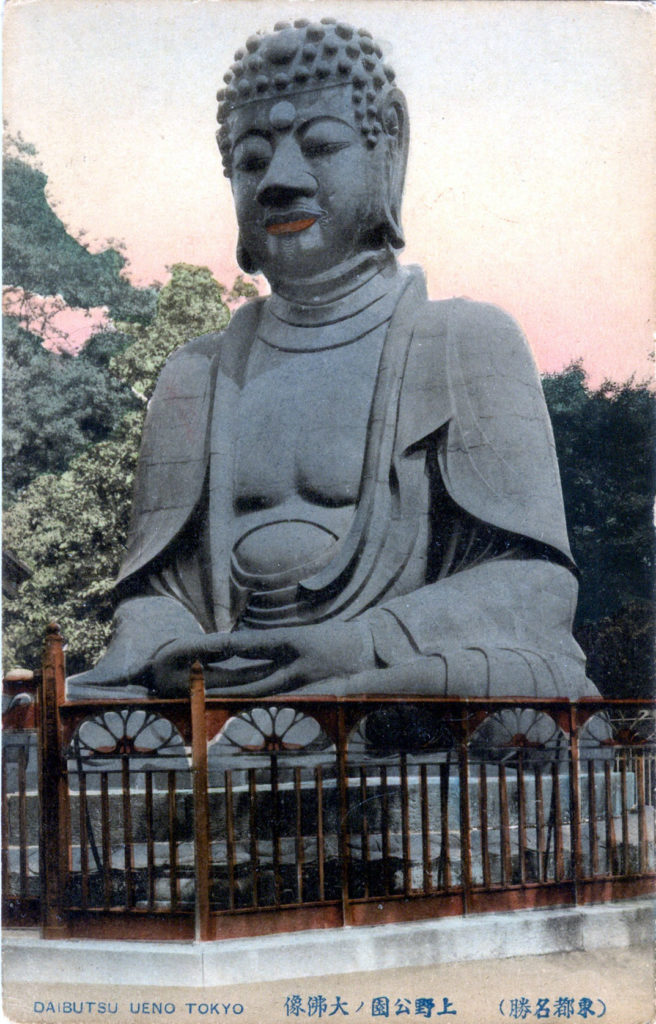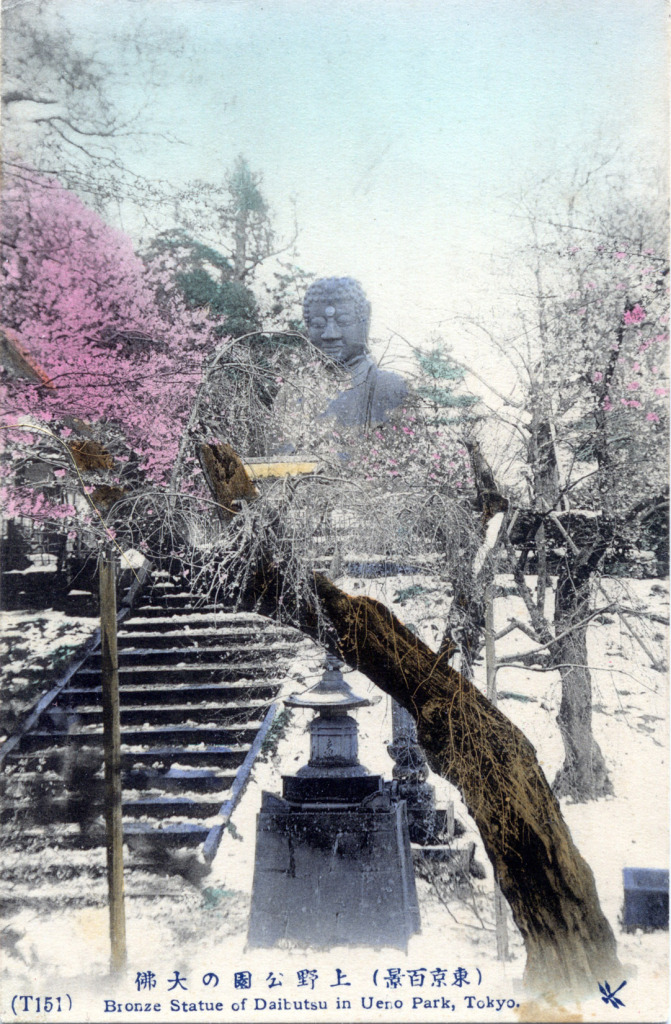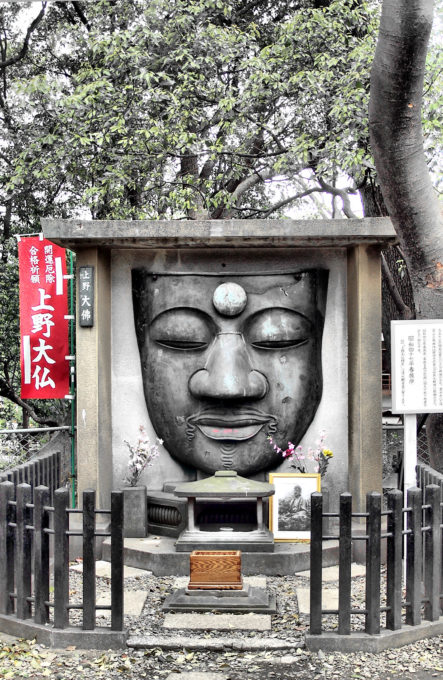“Ueno Daibutsu was an Edo-period giant seated statue of Shaka Nyorai that stood in the precinct Kaneiji, the personal Tokugawa family temple, in what is now Ueno Park. Cast of bronze and made to resemble the Kamakura Daibutsu, it dates to 1631. It was restored after earthquake damage in 1640, a fire in 1841, and another earthquake in 1855, and another fire in 1873 (that destroyed its shelter).
“Heavily damaged during the 1923 Great Kantō earthquake, when the head was toppled, much of its bulk was later melted down for use as munitions during the Pacific War. In 1972 the face, stored in Kaneiji since the war, was put on public display in its former location.”
– Wikipedia
- Ueno Daibutsu, Ueno Park, Tokyo, c. 1920.
- Daibutsu at Ueno Park, c. 1910.
“Japan is infamous for its education system involving challenging entrance exams not only for colleges, but high schools. A number of superstitions surround these exams, one of which is that it is bad luck to say words that could mean failing tests, such as ochiru (‘to fall’), suberu (‘to slip’) and korobu (‘to stumble’). In spring, many families visit shrines dedicated to gakumon-no-kami, or the gods of studying, which are usually deified historical figures such as Sugawara no Michizane, Yoshida Shōin and Ninomiya Kinjirō. Another of these sacred sites is Ueno Daibutsu, or the Great Buddha of Ueno.
“The original seated statue of Shaka Nyorai was built in 1631, within the private residence of the lord Hori Naoyori in Ueno. It was made of clay and stood about six feet and nine inches tall, but after an earthquake in 147, the statue was lost. During the Manji era (1658-1661), a traveling monk named Jō’un made a new, taller statue (about 11 feet and eight inches tall), with a dō hall additionally built around it in 1698. However this one was also lost, after a fire destroyed it in 1841.
“In 1843, two years after the second statue was ruined, Hori Naohide, descendant of Naoyori, rebuilt the daibutsu in bronze. This third iteration was the tallest yet, standing at nearly 20 feet tall. But though the bronze proved sturdier than clay or wood, the head of the statue was severely damaged in the Great Ansei Earthquake in 1855.
“During the Great Kantō Earthquake in 1923, the head fell off the statue. The Kan’ei-ji Temple took the remnants into its custody, and stored them at the temple as they couldn’t afford to rebuild it. After the breakout of the Pacific War, the metal pieces of the Buddha were donated to the army. Everything but the statue’s face was lost.
“In 1972, the face was placed on the site of the original Great Buddha, where a pagoda dedicated to the Yakushi Triad also stands. Ueno Daibutsu has become famous among students today—it cannot “fall” any further, and it is said that touching its face can give you good luck.”






Pingback: Ueno Park, c. 1910. | Old Tokyo
Pingback: Daibutsu, Nara, c. 1920. | Old Tokyo
Pingback: Daibutsu at Kamakura, c. 1910. | Old Tokyo